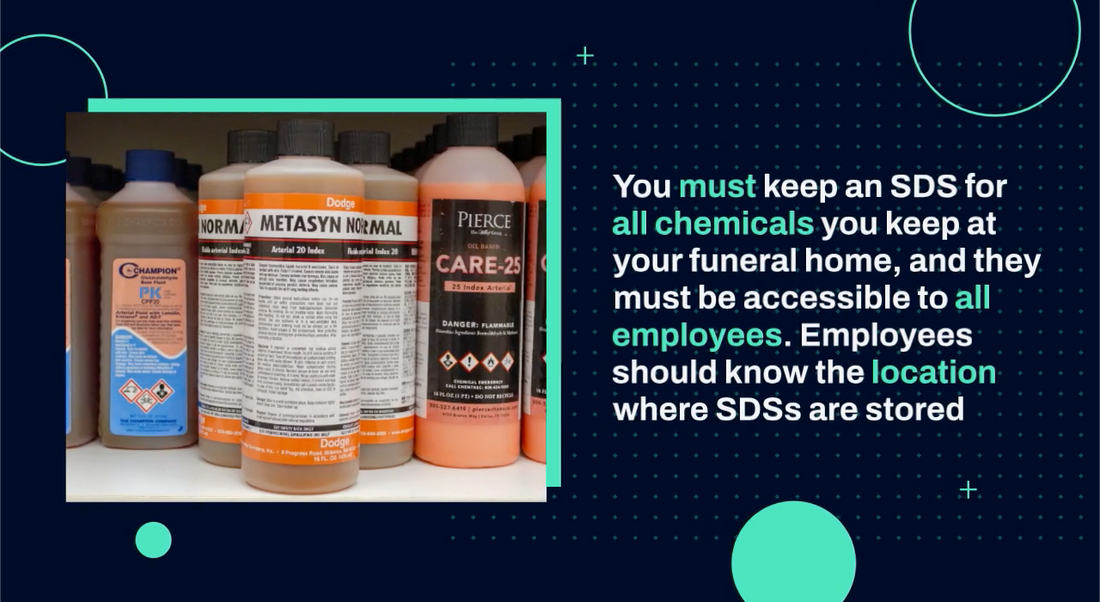Understanding OSHA Requirements for Funeral Homes: SDS Management

Share
Funeral homes play a crucial role in honoring the departed and supporting grieving families. However, amidst the emotional aspects of their work, it's essential to ensure the safety and well-being of both employees and visitors. This includes adhering to OSHA requirements, particularly regarding Safety Data Sheet (SDS) management.
What are SDSs?
SDSs, formerly known as Material Safety Data Sheets (MSDS), are comprehensive documents that provide information about the hazards of chemicals and how to safely handle, store, and dispose of them. These sheets are crucial for maintaining a safe working environment, as they offer detailed guidance on handling potentially hazardous substances.
OSHA Requirements for Funeral Homes
Funeral homes, like any other workplace, are subject to OSHA regulations designed to protect workers from occupational hazards. OSHA's Hazard Communication Standard (HCS) mandates that employers maintain SDS for all hazardous chemicals present in the workplace.
For funeral homes, this includes various chemicals commonly used in embalming processes, such as formaldehyde-based solutions and disinfectants. These chemicals, while essential for the preservation of remains, can pose health risks if not handled properly.
SDS Management Best Practices
To ensure compliance with OSHA regulations and promote a safe working environment, funeral homes should implement the following SDS management best practices:
-
Inventory and Documentation: Conduct a comprehensive inventory of all chemicals used in the workplace and obtain SDSs from suppliers or manufacturers. Maintain an updated list of chemicals and their corresponding SDS.
-
Accessible SDS: Make SDSs readily accessible to all employees who may handle or be exposed to hazardous chemicals. Consider digitalizing SDSs for easy access via computers or mobile devices.
-
Employee Training: Provide thorough training on the contents of SDSs, including how to interpret hazard information, proper handling procedures, and emergency response protocols.
-
Labeling: Ensure all containers of hazardous chemicals are properly labeled with the product name, appropriate hazard warnings, and a reference to the SDS.
By prioritizing SDS management and compliance with OSHA regulations, funeral homes can uphold their commitment to both honoring the deceased and safeguarding the well-being of their employees. Through proper training, documentation, and adherence to best practices, funeral directors and staff can navigate the complexities of chemical safety with confidence, ensuring a safer workplace for all.
Remember, OSHA regulations are in place not just to meet legal requirements, but more importantly, to protect lives and promote a culture of safety in the workplace. See how the CST App can help you manage your Safety Data Sheet electronically.
